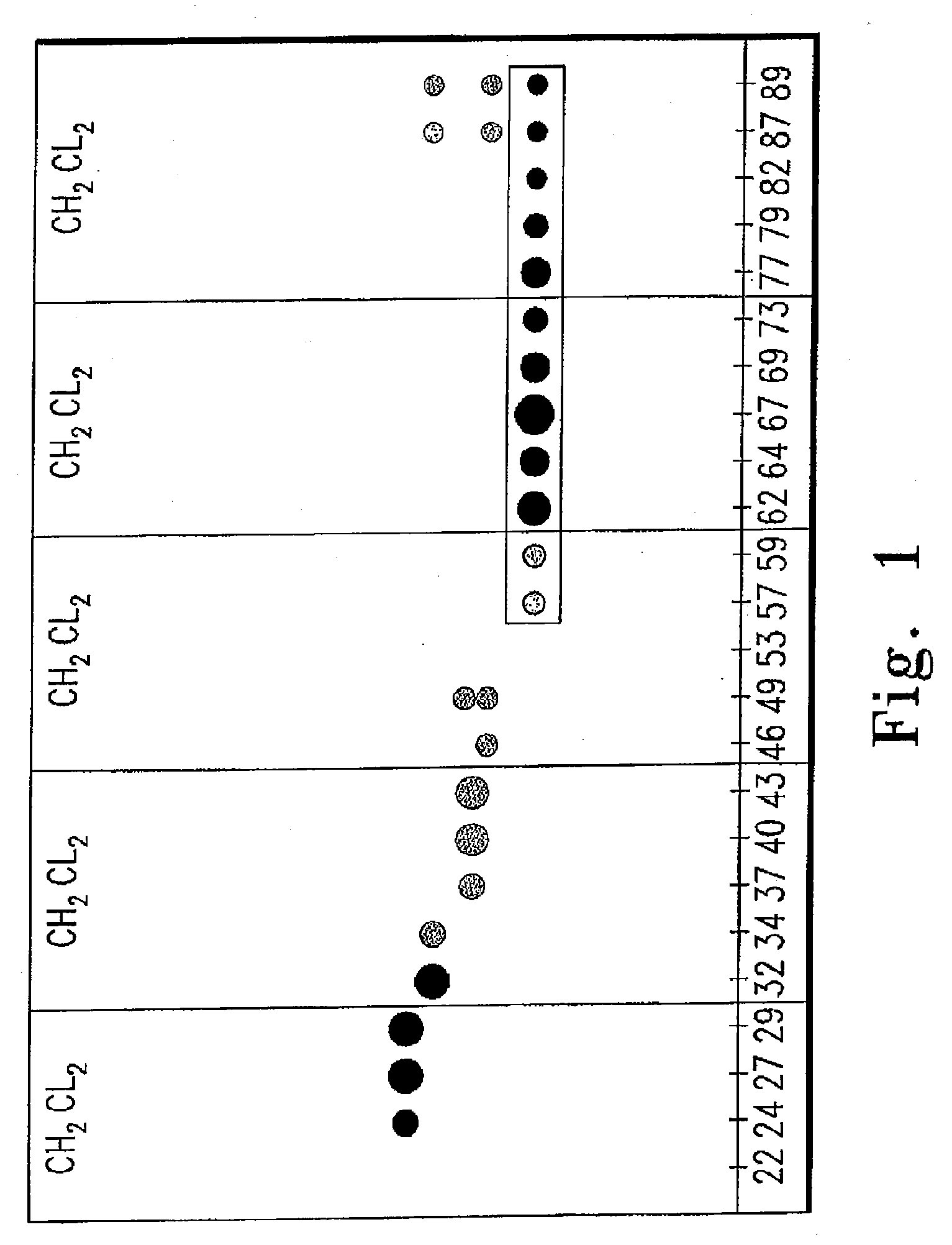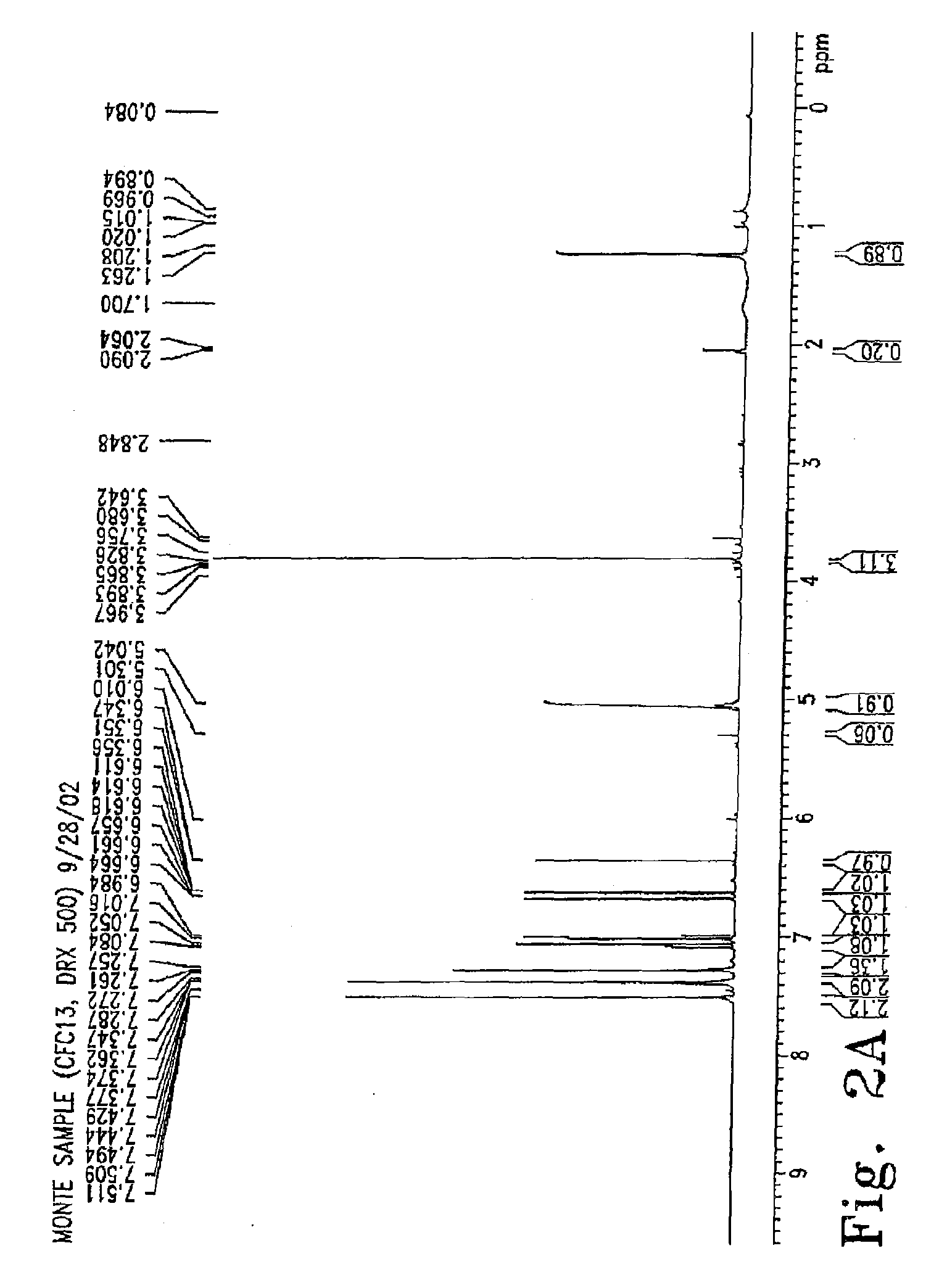Broad Spectrum Gram-Positive Antimicrobials and Anthelmintics with Efficacy Against Drug-Resistant Strains and Mycobacterium Species
a technology of gram-positive antimicrobials and anthelmintics, which is applied in the field of antiinfective agents, can solve the problems of increasing the number of visits to the doctor, increasing the number of antibiotic resistance tests, and increasing the number of toxic drugs
- Summary
- Abstract
- Description
- Claims
- Application Information
AI Technical Summary
Problems solved by technology
Method used
Image
Examples
example 1
[0133]Isolation and Identification of the Major Anti-Infective Compound from C. peregrina
[0134]The stems and leaves of C. peregrina were collected from various northern Wisconsin locales during the summer months of June-September and air dried in closed paper bags to protect the plant material from exposure to light. In an exemplary preparation, the leaves of C. peregrina were separated from the woody stems, and 163.69 g of this dried leaf material was placed in a cellulose extraction thimble. The plant material was subjected to continuous extraction for 24 hours using a Soxhlet extractor and methylene chloride (CH2Cl2) as the solvent. After removal of the solvent under reduced pressure and thorough drying the crude leaf extract was obtained as a sticky brown gum that weighed 8.87 g (5.4%).
[0135]The crude extract was then fractionated by flash column chromatography, using a 42 mm ID column, silica gel 60 as the stationary phase, and CH2Cl2 as the eluting solvent. Typically, 100-150...
example 2
[0138]HPLC Assay for CL Low
[0139]Sample Preparation: Dried samples extracted from TLC plates are dissolved in a minimal volume of methylene chloride and diluted to approximately 20 A290 / ml with isopropanol. Absorbance at 290 nm is close to the UV maximum for CL Low.
[0140]Column and Conditions: The assay is run on a 4.6 mm.times.300 mm Aligent C-8 HPLC column. The elution buffer is Methanol: 1% acetic acid in water (65% / 35%) run isocratically. Flow rate is 1.25 ml / min.
[0141]Assay Analysis: The Waters HPLC system has a diode array detector that allows analysis at several wavelengths during the run. A 15 μl sample is injected and the column is monitored at 254 nm and 290 nm.
[0142]Additional information: Spectra may be analyzed across a given peak to insure that the peak is pure (i.e., the spectra at the leading edge of the peak looks the same as at the end of the peak). The amount of material injected may also be adjusted to so that peak heights are about 1 Absorbance unit in height. O...
example 3
[0144]Characterization of 3-hydroxy-5-methoxy Stilbene Against Methicillin-Resistant Staphylococcus aureus, Vancomycin-Resistant Enterococci and Mycobacterium bovis
[0145]Methods: Methylene chloride extracts of the dried leaves of C. peregrina were initially screened for anti-microbial activity with disk diffusion assays (DDAs) against four indicator bacterial species. Successive flash column and thin layer chromatography were used to partition the crude extract into fractions that were tested for activity using DDAs against Staphylococcus epidermidis. An active compound was purified, and its structure was obtained using IR, GC-MS, and NMR analyses. Using NCCLS guidelines, DDAs and minimum inhibitory concentration (MIC) assays were performed against clinically significant Gram-positive bacterium. Isoniazid was used as a control for MIC assays performed with Mycobacterium bovis strain BCG. Tetracycline and rifampin were used as controls against all other bacterial species tested to e...
PUM
| Property | Measurement | Unit |
|---|---|---|
| minimum inhibitory concentration | aaaaa | aaaaa |
| temperature | aaaaa | aaaaa |
| thickness | aaaaa | aaaaa |
Abstract
Description
Claims
Application Information
 Login to View More
Login to View More - R&D
- Intellectual Property
- Life Sciences
- Materials
- Tech Scout
- Unparalleled Data Quality
- Higher Quality Content
- 60% Fewer Hallucinations
Browse by: Latest US Patents, China's latest patents, Technical Efficacy Thesaurus, Application Domain, Technology Topic, Popular Technical Reports.
© 2025 PatSnap. All rights reserved.Legal|Privacy policy|Modern Slavery Act Transparency Statement|Sitemap|About US| Contact US: help@patsnap.com



